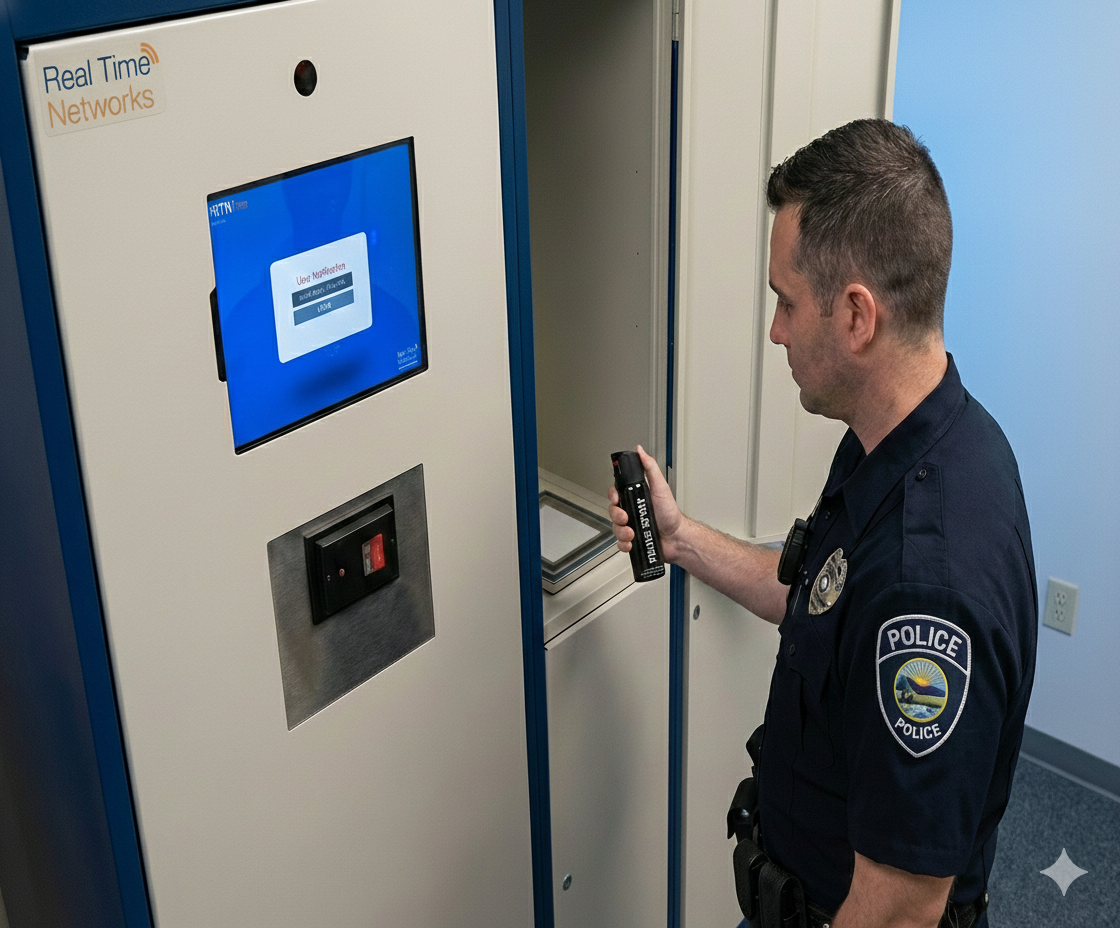By Jay Palter | November 9, 2022
Unpredictable jobs require many different tools. That is certainly true of law enforcement, where personnel rely on various equipment daily. And the larger your agency, and the more hats your personnel are asked to wear any given day, the more equipment you need on hand.
The deputies and other law enforcement personnel of the San Mateo County (SMC) Sheriff’s Office certainly have many hats to wear. And as you can imagine, they also have a large amount of police gear they need to manage across a large, fast-moving organization. As a result, they needed a smart solution to streamline how they managed their law enforcement equipment, fleet keys, and weapons.
Real Time Networks recently published a case study exploring how the Operations Support Division at the SMC Sheriff’s Office rolled out AssetTracer and KeyTracer systems. Read on for the highlighted findings of that case study.
The SMC Sheriff’s Office Faced Many Challenges
San Mateo County, California, is a diverse region with a population of over 750,000. It runs from Daly City and the San Francisco International Airport in the north to busy Redwood City and Menlo Park in the east at the heart of Silicon Valley, all the way to the more rural and isolated Coastside communities along the Pacific Ocean.
As the Covid-19 pandemic brought sweeping social changes, the Sheriff’s Office found itself managing a growing inventory of new police gear it acquired during lockdowns. In early 2021, one of the people at the Sheriff’s Office who recognized the need for better law enforcement equipment management was Lieutenant Andrew Hui of the SMC Sheriff’s Office Operations Group.
“Manual tracking wasn’t working. Deputies at every bureau had too much police gear coming and going every day for us to keep tabs on it all effectively,” Lt. Hui said. “It was a matter of accountability too. We didn’t want personnel going out on a call missing one important item. Or have a car not ready when someone needs it.”
Dealing With the Growing Problem of Equipment Management
The SMC Sheriff’s Office had to cover a large and varied jurisdiction. Its organization was equally large and varied, which created some interesting challenges regarding equipment management.
Each station needed different equipment management. The beachfront communities along the Pacific coast had very different policing needs to residential Daly City, or either of them to the urban Silicon Valley communities. In particular, each needed different amounts of police weapons storage.
Formulating a Plan
In April 2021, the SMC Sheriff’s Office requested proposals for a “law enforcement equipment inventory control system.” They asked for an equipment inventory system they could customize to fit storage needs at the stations in each of their five bureaus and their headquarters in Redwood City. The storage cabinets needed to accommodate all police gear deputies took on patrol and parking enforcement.
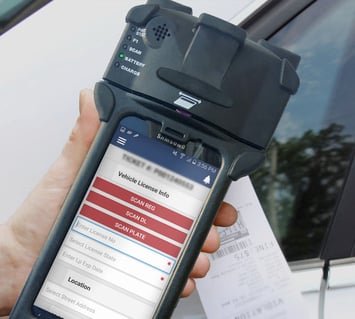
Ticketing handhelds needed special management
One of Lt. Hui’s specific needs in an equipment inventory management system was a way to track damage or repairs required for their traffic enforcement handheld devices. His deputies used these handhelds to scan driver's licenses, take voice recordings, take photos, and print citations. “The [ticketing] devices are great, but like any electronics, they break down,” Hui explained. “We didn’t have a reliable way to know when that happened.”
Implementing a Solution
Despite Covid restrictions, Real Time Networks worked with the San Mateo County Sheriff’s Office and was able to safely send personnel to oversee the installation of their AssetTracer and KeyTracer lockers on site. “It was a really collaborative process from the RFP onward,” Lt. Hui said.
RTN staff visited each station to assess how the installations could proceed. They collected details on station floor plans, electric wiring, and other design constraints. They sent detailed notes to RTN engineers on the power consumption of the ticketing handhelds and the dimensions of other vital police equipment, including long guns.
Each of the bureaus had different space constraints, equipment needs, and weapon storage needs. As a result, the SMC Sheriff’s Office design specifications evolved over the deployment process as the scope of storage needs at each bureau became clear.
"It was really easy to work with RTN to develop the program into specifically what we wanted," Lt. Hui said. The service, support, and collaborative design process, as much as the security technology, were what helped set Real Time Networks apart from the competition.
Immediately Seeing a Broad Range of Results
With the locker system in place, deputies could sign out the police equipment they needed at the start of every shift. In addition, the lockers provided content surveillance on each asset stored within a kit, so if someone didn’t sign out or return everything they needed, the system would issue an alert.
"It was very easy working with Real Time Networks,” Lt. Hui said. “It was very collaborative. Everything we asked for, we got." But while everyone was happy with the ease of transactions, secure equipment sign outs were not the greatest benefit.
Increased accountability
The number one benefit that Lt. Hui saw was increased accountability. Before, deputies signed out police equipment basically on an honor system. But now, the AssetTracer system gives them detailed, error-free reports about who signed out which critical assets and when. As a result, the Sheriff’s Office had better insight into when and where deputies used their paper citation books, fleet keys, and radar and lidar kits.
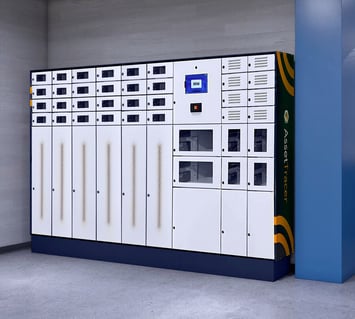
Automated critical fault tracking
The AssetTracer system also provided critical fault tracking on important electronic devices. In particular, the Sheriff’s Office wanted to know when handheld ticketing devices needed repair. Previously, they would only know a handheld was broken if an officer or deputy remembered to tell a supervisor. They could also use fault tracking for weapons management.
Now, the AssetTracer system prompted them to log any issues signing a handheld back into the locker, so nothing was ever missed. In addition, their AssetTracer system sends a daily report to supervisors, waiting in their inbox first thing in the morning so they would know immediately if a ticketing handheld or other item wasn’t working properly.
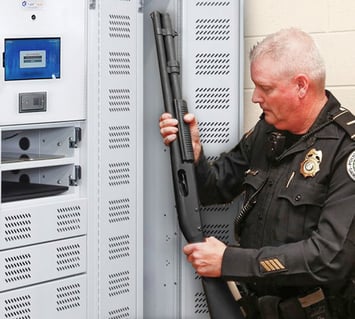
Better workforce enablement thanks to comprehensive customization
They were especially grateful for the AssetTracer remote unlock feature, which allows an authorized supervisor to remotely unlock storage compartments through a secure web connection.
The RTN systems supported more workforce enablement. For example, they gave the San Mateo County Sheriff’s Office staff new tools to get the police gear they needed on time consistently. And it helped them report issues, so broken items could get pulled from circulation without negatively impacting their colleagues.
The RTN systems didn’t force unnecessary changes into police operations. On the contrary, they made the way the Sheriff’s Office already worked even better.
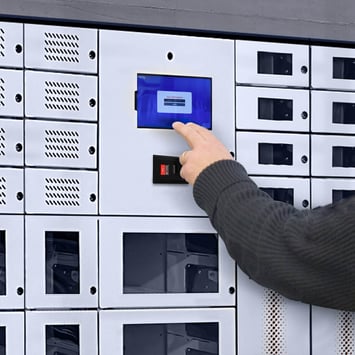
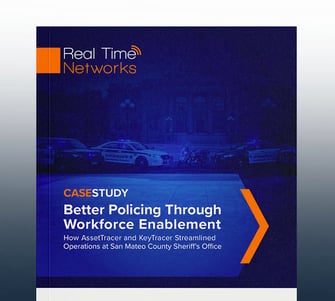
Lessons Learned
So what did the San Mateo County Sheriff’s Office and Real Time Networks take away from the start of their partnership?
-
Smart system design needs to be collaborative
Choosing a smart key or locker system isn’t just deciding which company offers the sturdiest hardware or fastest software. Of course, those are important considerations and weighed on the SMCSO’s selection of Real Time Networks. But they’re not the only ones.
Designing and running a smart equipment management system requires an ongoing partnership. You will collaborate from system design through installation and ongoing operations. Therefore, buyers need to consider which vendor will be the best business partner over the entire lifecycle of their system.
-
The real benefit is always workforce enablement
Smart technology has transformed business operations. No longer are tools like key cabinets and lockers useful just for storage. Smart automation technology turns them into something so much more. They’re platforms for workforce enablement, giving your workers new options for reporting problems and reserving critical assets they need for high-value work. Self-sufficient workers are more productive workers.
-
Large organizations need to find the right balance between centralization and decentralization
Too much centralization would have slowed operations, especially for remote bureaus with more unique needs, like Coastside Patrol. On the other hand, a too decentralized system may not have given senior officers insights into broad patterns in technical problems with their most popular ticketing handhelds. The key was finding flexibility, centralizing what they should for better oversight, and decentralizing the rest.
Subscribe to our blog

Jay Palter
Vice President of Marketing & Partnerships
